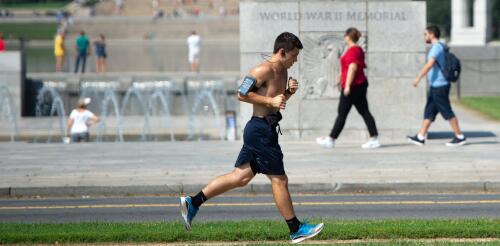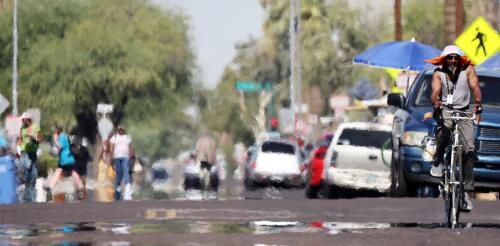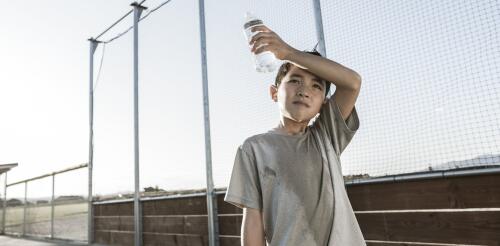Heat wave
As intense heat breaks records around the world, a little-reported fact offers some hope for cooling down cities: Under even the most intense periods of extreme heat, some city blocks never experience heat wave temperatures. How is this possible? Civilizations have recognized the power of cities to heat themselves up and cool themselves for centuries. City architects in ancient Rome called for narrowing streets to lessen late afternoon temperatures. Narrow streets were found to cool the air by limiting the area exposed to direct sunlight. The whitewashed architecture of the Greek Isles demonstrates another long-practiced strategy. Light-colored walls and roofs can help cool cities by reflecting incoming sunlight. Whitewashed buildings on the Greek island of Folegandros help deflect the heat rather than absorbing it. Etienne O. Dallaire via Wikimedia, CC BY In hot and humid regions of the southern...
Modern buildings tend to take electricity and air conditioning for granted. They often have glass facades and windows that can’t be opened. And when the power goes out for days in the middle of a heat wave, as the Houston area experienced in July 2024 after Hurricane Beryl, these buildings can become unbearable. Yet, for millennia, civilizations knew how to shelter humans in hot and dry climates. As an architectural designer and researcher studying urban resilience, I have examined many of the techniques and the lessons these ancient civilizations can offer for living in hotter and drier conditions. With global temperatures rising, studies show that dangerously hot summers like those in 2023 and 2024 will become increasingly common, and intense storms might result in more power outages. To prepare for an even hotter future, designers today could learn from the past. Sumerians: Keeping cool together The Sumerians lived about 6,000 years ago in a hot and dry climate that...
When summer starts with a stifling heat wave, as many places are seeing in 2024, it can pose risks for just about anyone who spends time outside, whether they’re runners, people who walk or cycle to work, outdoor workers or kids playing sports. Susan Yeargin, an expert on heat-related illnesses, explains what everyone should think about before spending time outside in a heat wave and how to keep yourself and vulnerable family members and friends safe. What risks do people facing running, walking or working outside when it’s hot out? The time of day matters if you’re going for a run, or if you’re walking or cycling to work during a heat wave. Early risers or evening runners face less of a risk – the Sun isn’t as hot and the air temperature is lower. But if your normal routine is to go for a run midmorning or over lunch, you probably want to rethink exercising in the heat. Pretty much everywhere in the U.S., the hottest part of the day is be...
You’ve probably heard people say, “It’s not the heat, it’s the humidity.” There’s a lot of truth to that phrase, and it’s important to understand it as summer temperatures rise. Humidity doesn’t just make you feel sticky and uncomfortable – it also creates extra dangerous conditions on hot days. Together, too much heat and humidity can make you sick. And in severe cases, it can cause your body to shut down. Meteorologists talk about the risk of heat and humidity using the heat index, but it can be confusing. I’m a risk communication researcher. Here’s what you need to know about the heat index and some better ways meteorologists can talk about the risks of extreme heat. Outdoor workers can be at high risk of heat illnesses. Robert Gauthier/Los Angeles Times via Getty Images What is the heat index, and how is it measured? Heat index...
Curious Kids is a series for children of all ages. If you have a question you’d like an expert to answer, send it to curiouskidsus@theconversation.com. My parents said the planet is getting too hot for people to live here. They called it climate change. What does that mean? – Joseph, age 12, Boise, Idaho Many countries have seen extremely hot weather lately, but in most of the inhabited world, it’s never going to get “too hot for people to live here,” especially in relatively dry climates. When it’s hot outside in dry places, most of the time our bodies can cool off by evaporating water and heat from our skin as sweat. However, there are places where it occasionally gets dangerously hot and humid, especially where hot deserts are right next to the warm ocean. When the air is humid, sweat doesn’t evaporate as quickly, so sweating doesn’t cool...




